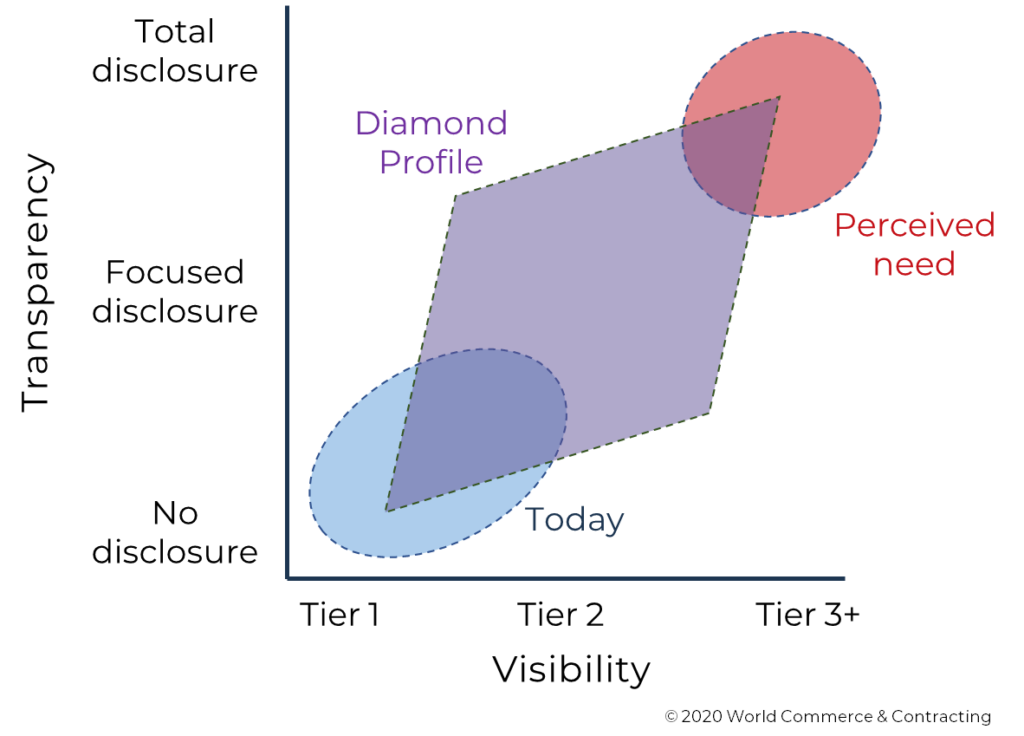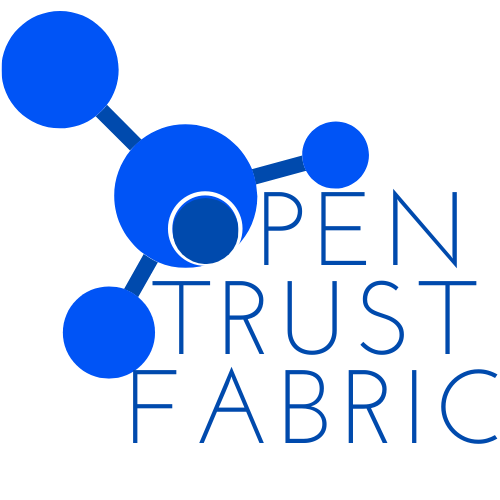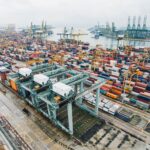The COVID-19 pandemic has brought into sharp focus the importance of supply networks. No longer can organisations treat them like ‘black boxes’ and only take interest in their direct or Tier 1 suppliers. There’s an increasing realisation of the critical need for a deeper level of visibility of supply networks and their participants at all tiers.
In a recent conversation a Procurement Executive, they acknowledged that the vast majority of supply issues that they had had to deal with were in tiers 3 and 4 of their supply network.
The vast majority of supply issues come from tier 3, 4 and below
World Commerce & Contracting research has identified that today less than 40% of respondents had visibility further than their direct/tier 1 suppliers. Yet a significant number stated that they needed enhanced visibility.
As the diagram below shows, while many organisations perceive the need for total visibility and transparency there is a cost to it which in most cases will outweigh the benefit and potentially be very difficult to achieve. What is required is a more sophisticated approach where organisations spend time understanding why they need enhanced visibility and transparency and what level is required as depicted by the ‘diamond profile’.

In this context, visibility relates to how much visibility is required in terms of the tier of the supply network. Whereas transparency relates to the amount and nature of the disclosure that’s required.
To bring the benefits of increased visibility and transparency to reality technology will be a critical component of the solution, however, perhaps more important will be a coherent and structured data architecture. Without this, any increased visibility and transparency will be unlikely to create benefits and will possibly increase risk due to poor data quality.
The approach being tested in this project to model the EU economy as an ecosystem of contracts has the real potential to create a taxonomy for contracts that could also include areas of required transparency as described above. Perhaps for the first time this will provide a coherent and structured data architecture allowing organisations to confidently unlock the potential value and benefits from increased visibility and transparency.
The project therefore has the potential to enhance value not only at the level of the EU economy but also at the sector, supply netwotk and organisational levels.





